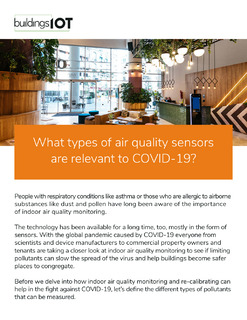People with respiratory conditions like asthma or those who are allergic to airborne substances like dust and pollen have long been aware of the importance of indoor air quality monitoring.
The technology has been available for a long time, too, mostly in the form of sensors. With the global pandemic caused by COVID-19 everyone from scientists and device manufacturers to commercial property owners and tenants are taking a closer look at indoor air quality monitoring to see if limiting pollutants can slow the spread of the virus and help buildings become safer places to congregate.
Before we delve into how indoor air quality monitoring and re-calibrating can help in the fight against COVID-19, let’s define the different types of pollutants that can be measured.


